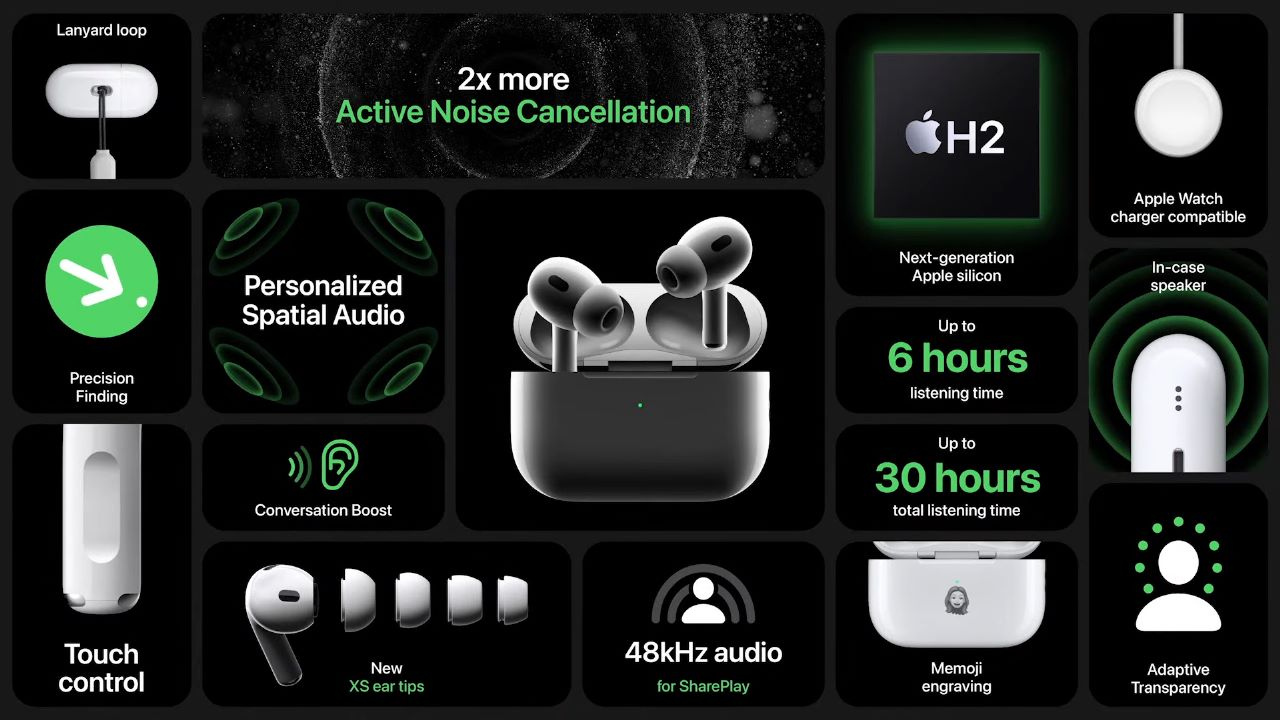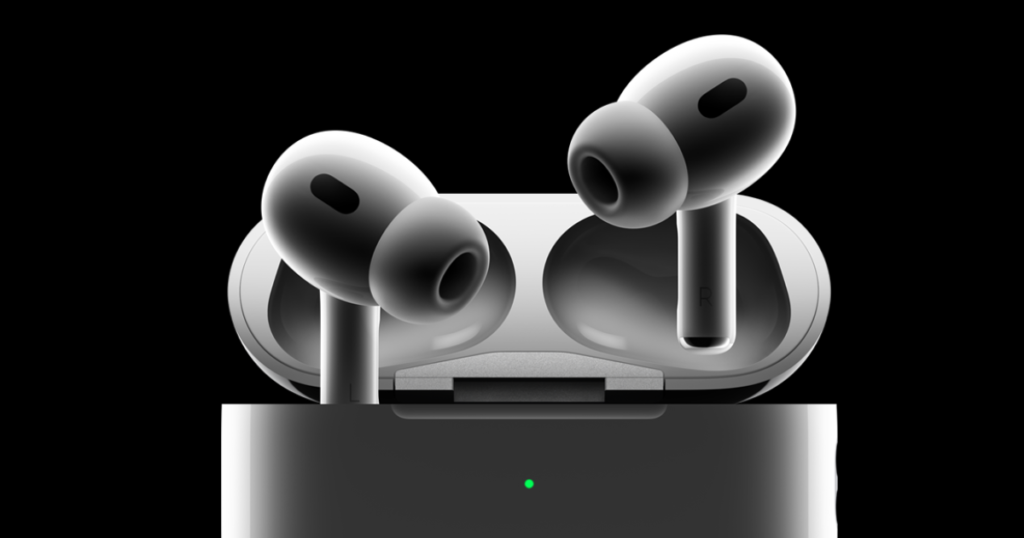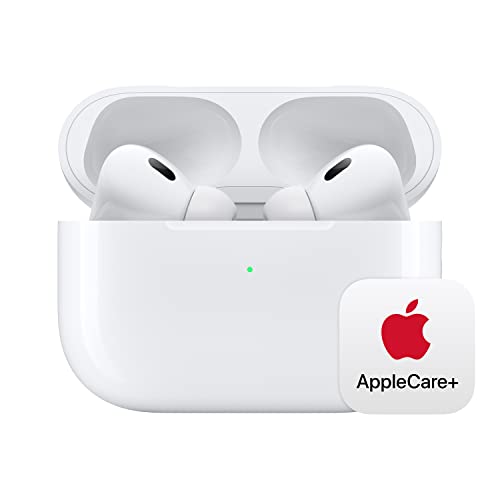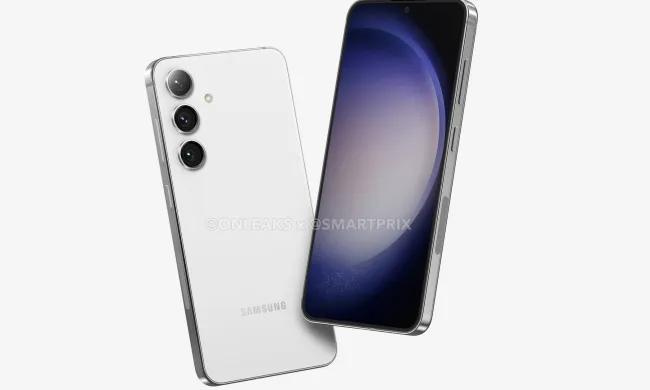
Introducing Apple AirPods new features
Ron Huang and Eric Treski delve into the exciting world of Adaptive Audio, Personalized Volume settings, Conversational Awareness features, and the cutting-edge Vision Pro connectivity of Apple AirPods Pro 2.
AirPods took a backseat during Apple’s recent keynote event, which is reasonable given the spotlight on the iPhone 15, Apple Watch Series 9 (and Ultra 2). Moreover, these headphones didn’t receive the same level of hardware enhancements. As confirmed in a press release following the event, the most notable physical change in the AirPods Pro 2 is the much-anticipated introduction of a USB-C charging case.
One might easily assume that the AirPods updates concluded with the hardware change. Nevertheless, Apple’s premium earbuds also received a substantial software upgrade in the form of new listening modes. These modes can be effortlessly accessed through a few taps in iOS 17, available for both versions of the AirPods Pro 2 (USB-C and Lightning).

When you have the new models connected, simply swipe down to bring up the Control Center, then perform a long press on the volume slider. Three mode options will appear below: Noise Cancellation, Conversational Awareness, and Spatial Audio. It’s worth noting that the focus this year is on the first two modes, receiving significant attention and enhancements.
The addition of Adaptive Audio is a notable inclusion among the options, alongside the standard Noise Cancellation, Transparency, and off settings. When you tap on this new option, it’s highlighted with a vibrant rainbow backdrop. This innovative feature seamlessly transitions between different settings in real-time. The goal here is to create a unified setting that allows you to navigate a bustling street with situational awareness, without being overwhelmed by the full noise impact of a passing trash truck.
While its name bears a resemblance to last year’s Adaptive Transparency feature, Adaptive Audio distinguishes itself by offering a comprehensive range of modes. Within this feature, both transparency and noise cancellation play pivotal roles, providing a more versatile and dynamic listening experience.
Eric Treski, Product Marketing Director, shared in a conversation with TechCrunch, “Adaptive Transparency, which we announced last year, operates at an incredibly rapid pace—40,000 times a second. This includes both monitoring and noise reduction. To bring down noise quickly, it has to occur in real-time. In contrast, Adaptive Audio operates a bit slower, taking a few seconds, as it’s designed to be a more deliberate process to discern what you’re listening to. When transitioning from Adaptive Audio to transparency, we intentionally slow it down to make the shift smoother and more comfortable for the user.”
Also Read | Best Alexa Speakers in 2023
The system also considers the type of content you’re listening to, distinguishing between music and podcasts. This determination is based on tagging from apps like Apple Music. Additionally, a microphone measures the volume within your ear to provide an accurate sense of the volume you’re experiencing. Ron Huang, VP of Sensing and Connectivity, emphasizes that solely measuring the loudness being sent to someone’s ears may be less accurate due to factors like how the AirPods are worn.

Huang explained that they considered using the device’s GPS to determine sound levels based on location. However, in real-world testing, this approach proved to be inefficient.
“In the early stages of exploring Adaptive Audio, we considered adjusting between ANC and transparency modes based on your location,” Huang stated. “For instance, the phone could send a signal to the AirPods saying, ‘You’re at home,’ and so on. While this is a viable method, after extensive research, we concluded that there might be better approaches. Homes aren’t always quiet, and streets aren’t always noisy. Therefore, instead of relying on location hints from the phone, AirPods monitor your surroundings in real-time and intelligently make these decisions on their own.”
Personalized Volume is a significant component of the Adaptive Audio experience. This system amalgamates a wealth of user data along with individual preferences to form a comprehensive understanding of listening habits. It employs machine learning to grasp environmental conditions and listening preferences over time, automatically fine-tuning the media experience. Apple incorporates various metrics into this process.
“We gathered tens of thousands of hours of diverse data—different users listening to various content in various background noise conditions—to truly comprehend distinct listening preferences and identify noise-related distractions and disruptors that could affect your content’s clarity,” Huang explained. “We also remember your personal preferences, such as the noise levels in a given environment and your typical content volume. This information is incorporated into our machine learning model to optimize your experience.”
Another noteworthy feature introduced with iOS 17 is Conversational Awareness. This feature reduces the volume of your audio when you start speaking, but it’s triggered only by the wearer’s voice and not external voices. Apple achieves this without relying on onboard voice profiles; instead, it utilizes onboard sensors. The feature activates when the microphones detect a voice and the accelerometer detects jaw movement. Its duration varies based on several factors. Notably, the feature impressively avoids being triggered by actions like clearing one’s throat or yawning.
Also Read | Apple’s New iPadOS 17 Adds Multitasking, Health, Messages, Widgets
The team also addressed another common issue with earbuds: switching audio sources. The frustrating five-second gap between answering a call and hearing it through your earbuds can feel like an eternity. Achieving faster switching speeds requires users to be firmly integrated into the Apple ecosystem.
“Connection times for our AirPods to our devices have significantly improved with this new software update,” Huang explains. “This improvement stems from our various methods to discover nearby devices. It’s crucial for us to understand what the iPhone, iPad, and Mac are doing at any given moment. For instance, when you’re answering a phone call, we prioritize connecting to your Mac for a conference call, recognizing that phone calls take precedence over music.”
The final significant piece of the AirPods announcement is Vision Pro connectivity. To fully immerse in the audio experience when using Apple’s forthcoming spatial computing headset, it’s recommended to pair it with the new AirPods Pro. This combination ensures ultra-low latency lossless audio for an unparalleled auditory experience.
Also Read | LG Launches Exclusive ‘League of Legends’ UltraGear Gaming Monitor
Apple AirPods Features Summary
| Feature | Description |
|---|---|
| USB-C Charging Case | The AirPods Pro 2 comes with a modern USB-C charging case |
| Adaptive Audio | Seamlessly switches between transparency and noise cancellation for a dynamic listening experience |
| Personalized Volume | Uses machine learning to adjust audio based on user preferences and surroundings |
| Conversational Awareness | Reduces audio when the wearer speaks, enhancing conversation awareness |
| Improved Device Connectivity | Faster switching between devices, particularly within the Apple ecosystem |
| Vision Pro Connectivity | Ensures ultra-low latency lossless audio for Apple’s spatial computing headset via a dedicated 5GHz channel |
“Bluetooth typically operates on the crowded 2.4 gigahertz spectrum, which is highly congested,” explains Huang. “Almost everything runs on 2.4 gigahertz. This is why Wi-Fi routers, for instance, are often dual-band or even tri-band, as the 5GHz spectrum offers a much cleaner signal. To achieve extremely low-latency audio and deliver high-fidelity lossless audio, it’s essential to establish a clean and real-time communication channel between two devices. The combination of the 5GHz spectrum and their close proximity allowed us to do just that. We essentially designed an entirely new audio protocol over the 5GHz spectrum specifically for AirPods.”













